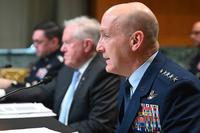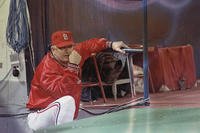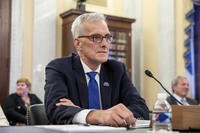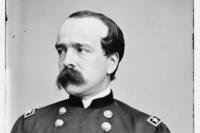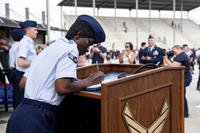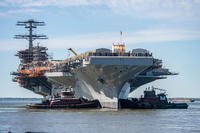SAN DIEGO -- Aircraft carrier USS Carl Vinson (CVN 70) returned from an underway April 19, after a series of engineering drills and time spent preparing for a Mid-Cycle Material Assessment (MCMA).
Carl Vinson will be the test pilot for the new assessment program in the coming months.
The Mid-Cycle Material Assessment was developed by Commander Naval Air Forces (CNAF) to assess the material condition of a ship between Board of Inspection and Survey (INSURV) inspections.
"It is an opportunity for the type commander to take a look at the condition of aircraft carriers in-between the three-to-five year INSURV schedule," said Chief Engineer (CHENG) Cmdr. Daniel Lannamann. "There is concern that the INSURV's are too far apart."
The INSURV program was established by Congress to ensure the fleet's material condition is sufficient for mission readiness. It is typically a five-day inspection evaluating a wide range of the ship's equipment. With current fiscal constraints, there is a need to maximize the lifespan of the fleet, thus creating a need to supplement the INSURV program.
"As our fleet ages, CNAF is encountering some material condition issues that may not have been anticipated," said Strike Operations Officer Cmdr. Bennet Goff. "To identify these problems between INSURV's, the Type Commander developed MCMA's as a way to go in and look at systems that would be looked at during INSURV, but wouldn't otherwise be checked during a normal underway or during the fleet response training program."
Carl Vinson's selection to be first to undergo MCMA is driven in large part by the schedule, but given its recent history, the ship is a good fit in the eyes of the command.
"No one has actually done this before; Carl Vinson will be the first," Goff said. "Given Carl Vinson's excellent maintenance record and the ability to execute the recent Planned Incremental Availability (PIA), it makes us the ideal candidate to be the first ship to participate in the MCMA."
Being the first allows Carl Vinson to provide valuable feedback to developers of the program and share lessons learned to future carriers going through the assessment.
"There already have been several lessons learned that we have taken back to CNAF about the program itself," Goff said. "We are currently in the middle of talks with CNAF about how the schedule is executed, and identifying where there might be some sticky points where we would be able to do things a little bit better."
The next carriers to undergo MCMA will be able to benefit significantly from all the lessons learned during this initial run, said Goff.
The evolutions completed included two precision anchorages, aircraft catapult and elevator operations, a countermeasure wash-down on the flight deck and small boat operations. All evolutions were completed using the MCMA procedures that will be used during the actual assessment.
The primary purpose of this underway was to support the proficiency of propulsion plant operations for upcoming assessments, but given the flexibility of the crew, the ship was able to incorporate four or five of the bigger evolutions that will be completed during MCMA, Goff explained.
Although this underway period in not specifically focused on the preparation for the MCMA, the flexibility to add to the training schedule demonstrates Carl Vinson's ability to make the most of the underway period.
"It is very important to recognize the hard work of the Sailors of Carl Vinson," Goff said. "As we face uncertain budgetary constraints, I think our ship - in particular - is doing a very good job making the most out of every training opportunity we are presented, every underway we are presented. If you look at what we're doing this underway period, we are preparing for multiple assessments simultaneously, impacting each department on the ship. The crew is working at a fast pace and is able to squeeze every training opportunity we have into the underway."

